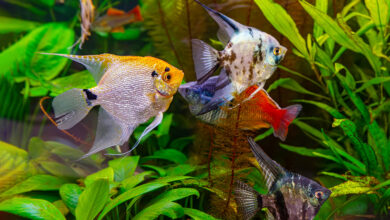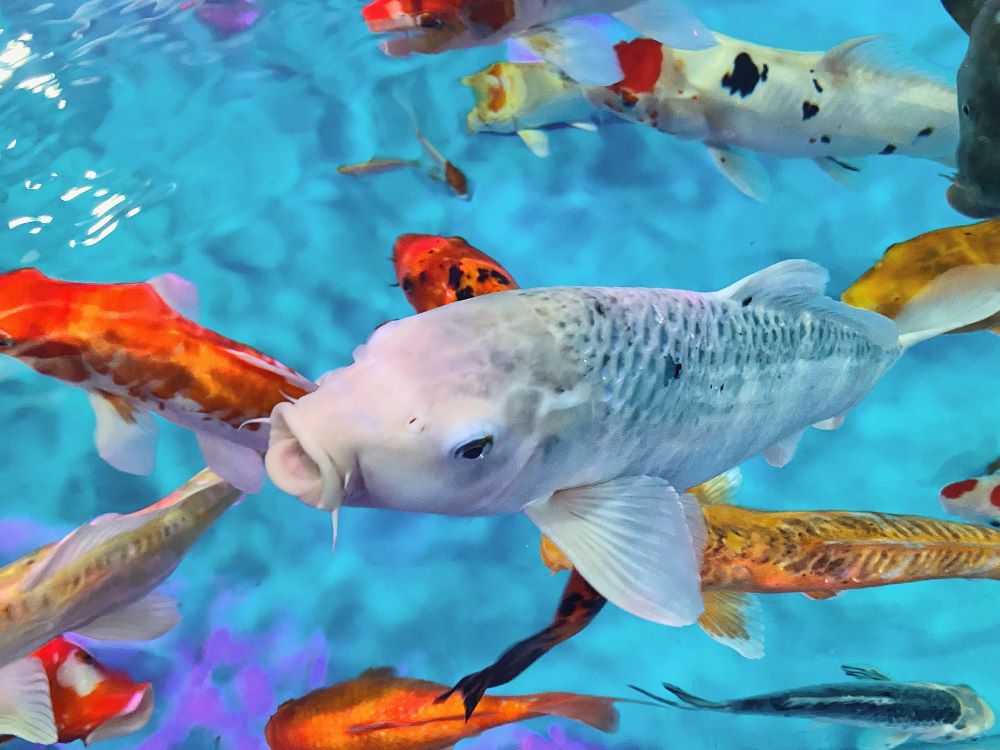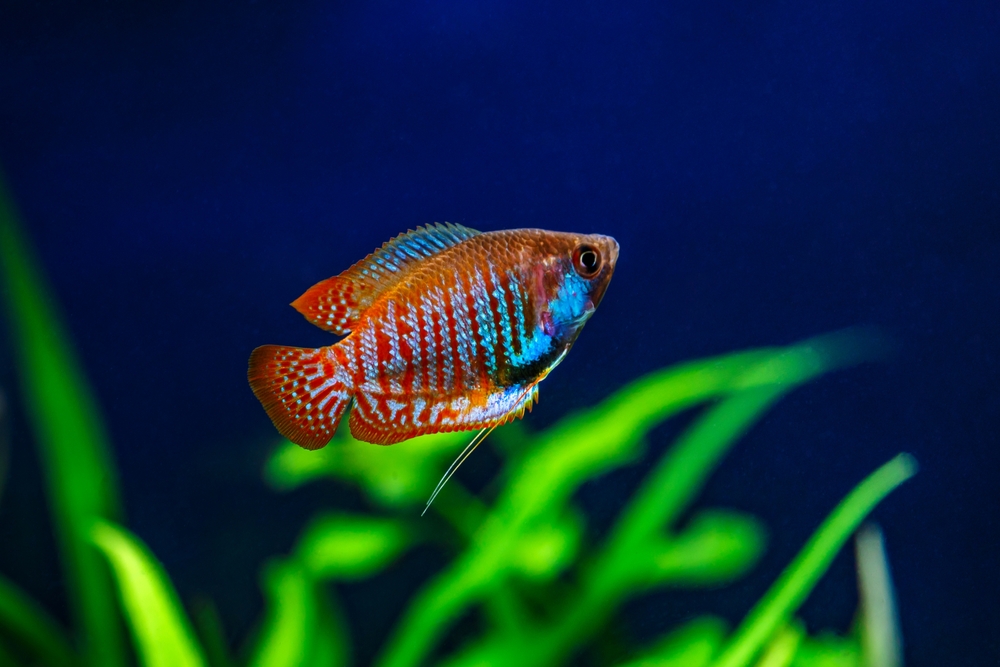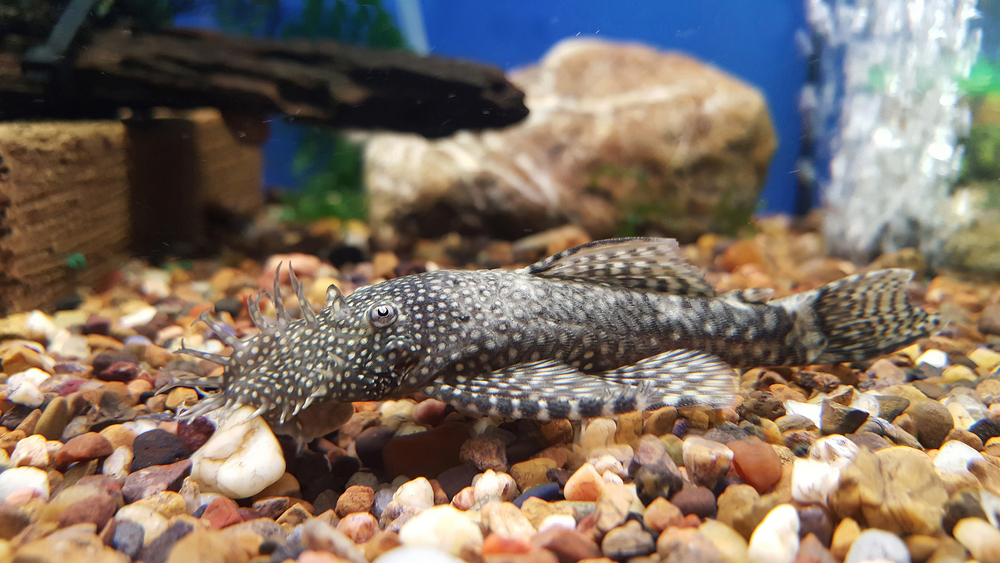15 Best Parrot Cichlid Tank Mates – FishLab
When you purchase through links on our site, we may earn a commission. Here’s how it works.
The exotic Parrot Cichlid is a fun and playful addition to any community tank. Since they are full grazers, who often swim around the entire tank from top to substrate, it’s best to keep them with other parrot cichlids or gentle, non-territorial species. Just stick to the golden rule of the fish world, understand that larger fish will eat smaller fish, and only house similar size fish together.
Some of the best Parrot Cichlid tank mates include Severums, Angelfish, Oscars, bigger Tetras, Crown Loaches, Corydoras, and Arowanas. These fish all occupy different spaces in the community tank and get along well if the species are all large, placid fish with enough food and tank space to keep them comfortable.
Table of Contents
Check out the complete list of 15 fish species that make the best tank mates for Parrot Cichlids.
The 15 Best Parrot Cichlid Tank Mates
You also shouldn’t miss these other popular picks in this category:
- Kissing Gourami Tank Mates
- Black Skirt Tetra Tank Mates
- Buenos Aires Tetra Tank Mates
- Sparkling Gourami Tank Mates
1. Emperor Tetra
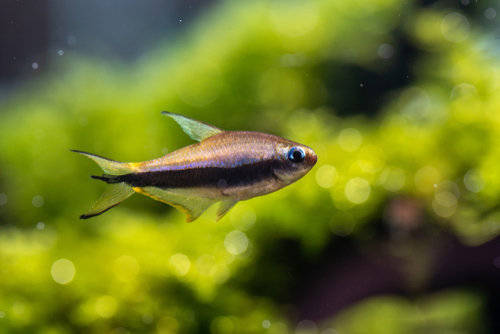
With calm personalities and robust bodies, Emperor Tetra fish are unusual but perfect tank mates for Parrot Cichlids. They are schooling fish that enjoy warm tanks with lots of plants and temperatures around 78-84F. Parrot Cichlids prefer similar water temperatures and vegetation conditions.
In contrast to most Tetras, Emperor Tetra male and female fish are easy to tell apart. Males are bigger with slimmer figures, while their caudal fine extends into the shape of a trident. Females, meanwhile, have smaller and chubbier bodies without any trident fork at the tail.
2. Gouramis
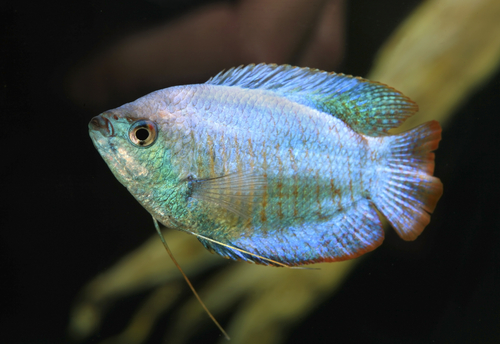
A diverse species that hails from Southeast Asia, Gouramis can include both Betta Fish and Siamese Fighting Fish. All Gouramis are partial air breathers and enjoy warm tropical water conditions. Due to their deep bodies and temperament that can range from peaceful to slightly aggressive over breeding or territorial concerns, Gourami fish are great tank mates for Parrot Cichlids.
Except for the Blue Gourami or Three-Spot Gourami, most Gourami varieties are peaceful fish that won’t cause any trouble if your Parrot Cichlid has a similar placid personality.
3. Firemouth Cichlid
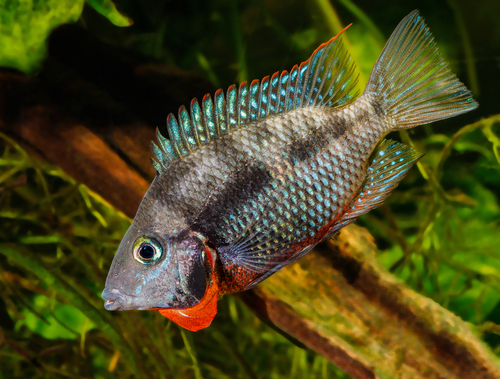
Most cichlids from Central America are too big and aggressive to keep with most Parrot Cichlids. That’s because Parrot cichlids have tiny mouths that prevent them from joining in typical cichlid behavior like lip-locking and wrestling games.
Avoid bullying by tank mates by choosing a Firemouth Cichlid instead. Despite their name, these fish are very gentle and tend to scare off any threats by displaying their fiery red bellies and gill arches instead of nipping or biting.
These carnivores grow up from 4 to 6 inches and can get semi-aggressive to other males during mating. They enjoy plenty of space, neutral to slightly alkaline pH conditions, and fresh and frozen foods like bloodworms, brine shrimp, and tubifex.
4. Oscar Fish

Most fish in the cichlid species are aggressive on some level. That’s why it’s important to have a large enough tank to accommodate the size and chosen variety of fish. Since Parrot Cichlids and Oscars are part of the same family, they get along well if the fish are a similar size, have plenty of swimming space, and have lots of places to hide.
You can minimize aggression by putting fish together when they are young so that they grow up together. A well-fed fish is also less likely to get territorial and aggressive.
5. Swordtail
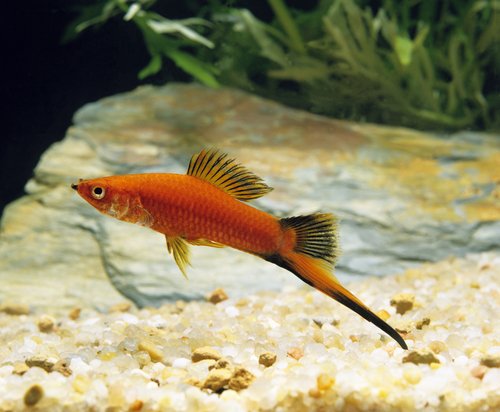
A dramatic-colored fish with a long tail, the Swordtail comes from Mexico and plays well with Parrot Cichlids in the same tank. A male Swordtail will show off his gorgeous lower fins in a complicated dance that’s amazing to watch. Even females will get in on an occasional and harmless sparring match.
These peaceful specimens are some of the easiest kinds of fish to care for and breed. They adapt well to different water parameters but prefer neutral to somewhat alkaline water conditions.
6. Auratus Cichlid
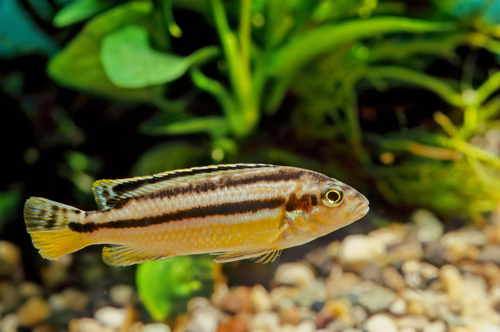
Most cichlid varieties do well in the same tank as Parrot Cichlids since they belong to the same family. Native to the African continent, the Auratus Cichlid is a striking golden fish with horizontal black lines or a deep bluish-black fish with a long, iridescent upper dorsal fin.
These fish are the perfect way to add some interesting activity and color to your tank. Just like the Parrot Cichlid, this kind is also medium-sized. While they can get aggressive, they are omnivores who mostly feed at the bottom of the tank, away from the middle space preferred by Parrot Cichlids.
Add some rocks to the bottom of the tank to mimic the Auratus Cichlid’s natural habitat and provide them with lots of live bloodworms, ghost shrimp, brine shrimp, and Spirulina flakes to keep them happy.
7. Angelfish
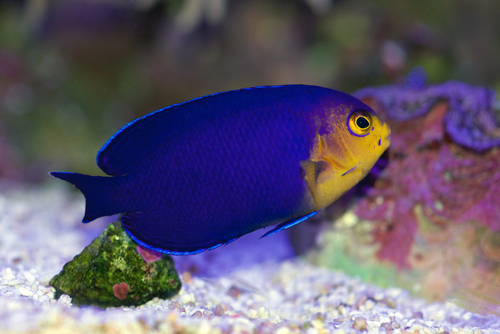
These graceful and beautiful fish come in a variety of shades, patterns, and colors. Many kinds have delicate dorsal fins and iridescent blue or bronze bodies with distinctive vertical black bands across their bodies and at the base of the caudal fin. Others may have black and cream zebra stripes.
Angelfish are part of the cichlid species, which helps them get along well with their Parrot Cichlid cousins. There are many Angelfish varieties to choose from which include Gold, Marble, and Koi varieties. Most Angelfish grow up to six inches long.
While they are usually mild-mannered, Angelfish can act a little less angelic during breeding season when males spar with others for the females’ attention. Like any bigger fish, they are prone to swallowing smaller fish, so it’s a good idea to avoid putting small fish like Guppies or Neon Tetras in the same tank.
8. Golden Severum
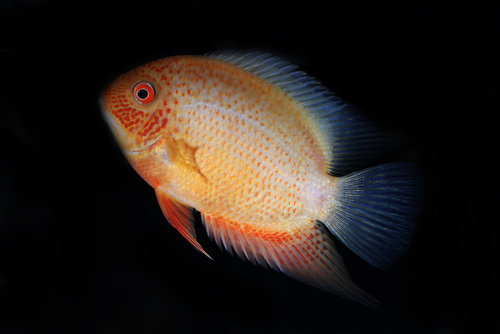
This golden-colored cichlid variety has a placid and peaceful temperament which helps it get along with many fish that have a similar size, such as the Parrot Cichlid. Adult Golden Severum fish grow from 6 to 8 inches, which is comparable to the adult Parrot Cichlid’s 8-inch size.
If you want to combine Golden Severum with Parrot Cichlids, it’s essential to have a large aquarium that holds 45 gallons for one fish or a 100-gallon tank for a breeding male and female. Just make sure to get a big enough tank to accommodate all the fish species and numbers in your aquatic community.
9. Kribensis
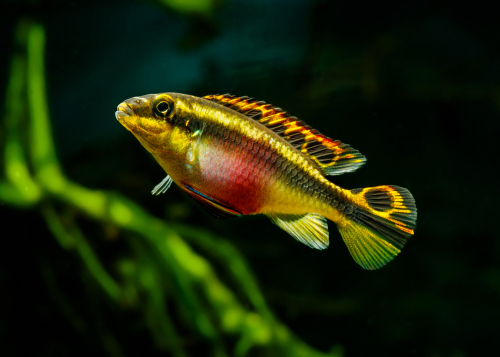
The Kribesis is an unusual but great tank mate for a Parrot Cichlid. Like all cichlids, Kribensis fish can get more aggressive during breeding periods, but they can defend themselves if a territorial conflict occurs. Both species aren’t likely to engage in excessive fighting or injure each other. The Kribs are a cichlid dwarf variety that can grow from 3 to 4 inches in size.
They don’t usually dig much in the substrate or uproot plants, so they are easy on aquarium décor.
10. Corydoras

As active bottom feeders, these cute Corydoras fish are a schooling species whose growth is usually capped at 2-3 inches. While this might sound like Corydoras wouldn’t work with the bigger Parrot Cichlid fish, these small fish have spiked fins and armor on their flanks to protect them from potential aggression from Parrot Cichlids due to their size.
This species is fun to watch since they have several quirky habits like rolling their eyes and often dashing from the bottom to the top of the tank to take in air.
They enjoy a broad range of foods. The key is to use sinking mini pellets that are small enough for them to swallow. Sinking pellets will also help Cories get enough food since they can’t compete for food at the surface.
If you want to keep Corydoras with Parrot Cichlids, the best size to get is Emerald Green Corydoras, also known as Corydoras splendens, or varieties from the Brochis species.
11. Silver Dollar Fish
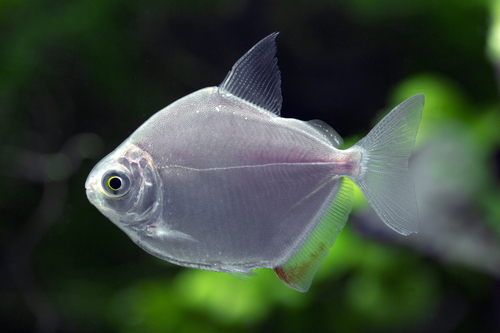
These lovely and popular schooling fish enjoy being in a group of at least 5 of their own kind and can grow up to 6 inches long. With round silver bodies shaped like silver dollars, this species gets along well with Parrot fish.
Just make sure that you have a big enough tank to accommodate an entire school plus any other fish species that you may have. As always, try to get the same size of fish and add plenty of rocks or other ornaments to create caves and hiding places.
12. Rosy Barbs
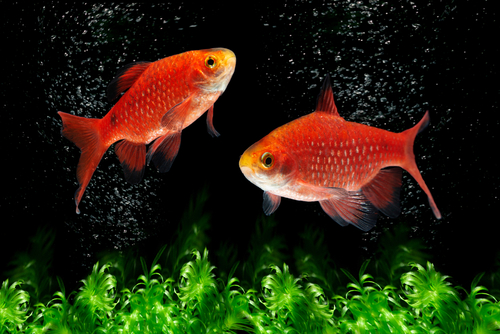
With brilliant emerald green and ruby red scales, a Rosy Barb is a perfect fish to offset your Parrot Cichlid’s bright orange color. While Parrot Cichlids aren’t usually aggressive, they can get a bit territorial at times, so a Rosy Barb’s ability to hold its own makes it a good addition to a community tank.
Like most other kinds of fish, males like to display and dominate other males for the attention of the females during breeding periods. That’s why you will want to keep just one male with a couple of females. Despite their mating behavior, Rosy Barbs rarely hurt other fish.
13. Clown Loach
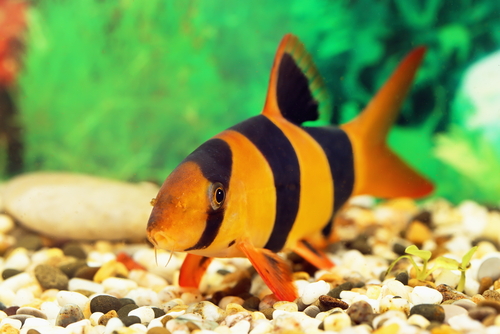
Clown Loaches and Parrot Cichlids don’t bother each other much, which makes them great tank companions.
Since Clown Loaches are usually bottom feeders and the Parrot Cichlid spends most of its time swimming and feeding in the middle of the tank, they don’t cross paths too often.
Like all schooling fish species, the Clown Loach is more active, social, and better behaved when with a group of at least 6 other Clown Loach fish. If you have fewer than 6 fish, they tend to become timid, shy, and spend more time hiding.
This means that if you choose a Clown Loach as your Parrot fish’s tank mate, you’ll need to get enough of them to create a school. You will also want to get a big enough tank to hold all the different fish species. Just add some rocks, plants, driftwood, and other caves where your Clown Loach can hide.
14. Black Skirt Tetra

While the Black Skirt Tetra doesn’t have dramatic colors like some of its relatives, they have interesting black-and-silver-toned scales and beautiful fins that flow gracefully in the water. They have bold personalities but get along well with Parrot Cichlids if there isn’t competition for food or space.
Like almost every Tetra from South America, the Black Skirt Tetra likes soft and acidic water. While they aren’t dangerous to other similarly sized fish, they are micro-predators who need a mixed carnivorous diet that includes frozen brine shrimp nauplii, bloodworms, small pellets, and flakes that are rich in protein.
There’s also a lab-engineered Black Skirt Tetra that’s designed as a schooling Glofish. When these fish express fluorescent jellyfish and proteins from coral, they glow in the dark if UV light is used. The GloTetra variety is also a fun and easy addition to a community tank that includes Parrot Cichlids.
15. Arowanas
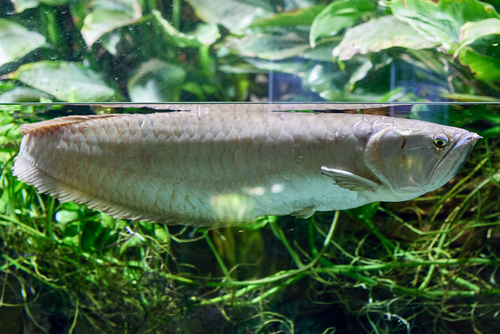
Arowanas are a good tank mate for Parrot Cichlid fish. In general, it’s possible to house a silver Arowana with Parrot Cichlids in an aquarium. You will just need to ensure that the Arowana size is larger than the Parrot fish.
While the Parrot Cichlid is usually peaceful, it might get aggressive toward smaller fish. That’s why it’s always essential to choose fish that are comparable in size.
Another consideration is tank size. Since silver Arowana fish can grow up to 47 inches long, you’ll need to make sure that you have enough tank space to keep them comfortable, and happy, and prevent anyone from getting territorial.
While Parrot Cichlids like to graze throughout the entire tank, often floating in the middle or sometimes digging in the substrate, Arowanas prefer to stick to the bottom. This means that they don’t tend to get in each other’s way.
Final Thoughts
When adding any fish to create a community tank, it’s always important to consider fish whose temperaments mesh well together. In general, this means calm and non-territorial fish who keep to themselves or their own school of fish and won’t nip at fins or eat each other.
Another important thing when choosing Parrot Cichlid tank mates is water requirements. While most fish adapt to some water parameters, you’ll want to ensure that the temperature and pH levels are acceptable for everyone in the tank, since you can’t adjust pH and water degree to suit multiple different fishes’ needs. You’ll also want to ensure that the tank is large enough to accommodate the fish.
If you follow these golden rules, add any new fish slowly, and watch how they get along, you can create a peaceful tank community that has many interesting species to watch.
